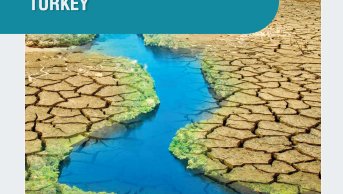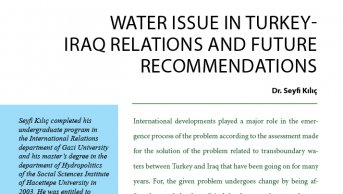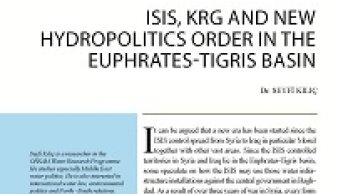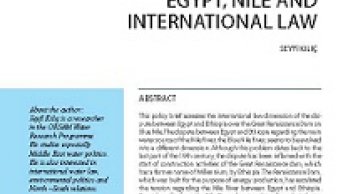Environmental Problems Linked with Ethnic Problems in Iran

Some big projects have been developed in Iran in order to meet the water needs of certain regions in the country, which has severe problems regarding water resources.
It was announced that as the primary project to meet the water need, a pipeline would be built to transport water from the Caspian Sea to Qom, Isfahan and Kashan, which are located in the hinterlands of Iran. Even though the project was criticized both by certain groups in Iran and others from abroad, those criticisms were generally limited to environmental and technical concerns.
However, in the Lake Urmia basin, where Iran has faced major problems regarding the management of water resources, Iran was criticized both in environmental terms and also in ethnic terms. Azeris in the region accuse Iran of forcing the inhabitants of the region to migrate by sitting back and watching the lake dry up on purpose. Iran's inappropriate water resources development policies, which damage the environment, are seen as the main reason for Lake Urmia drying up. Dams constructed on 13 rivers feeding the lake and the irrigation systems linked to the dams prevent the lake from being fed. As a result, the water level of the lake has fallen.
Another factor which should be taken into account is the drought that has been prevailing in the basin for many years. It is observed that the surface area of the lake has declined from 6,100 square kilometers to 2,300 square kilometers. Salt, which is found in the dust from the dried up lake bed, leads the inhabitants of the region to abandon their agricultural lands and the rural population to leave their land as they lose their source of income. The fact that the majority of the settled rural population in the basin, where approximately 6.5 million people live, is composed of ethnic Azeris makes the existing problem more complicated. It is expected that all the people living in the region are affected by the accumulation of 8 billion tons of salt in the lake bed.
The first protest regarding this problem, which started to attract attention in the 1990s, was staged in 2009. The protest was perceived as a direct threat, and those who took part in the protest were condemned to various punishments. Similar protests took place in the following years, and many people were prosecuted by the Iranian government. The fact that Iran dealt directly with the protests regarding the environment as a security problem may stem from the fact that the people who live in the region are Azeris. On the other hand, water that will be transported from the Aras River with the aim of saving the lake carries the potential to cause problems between Iran and Azerbaijan, which is another nation.
In addition to these developments in the northwest of the country, it seems that a new problem has emerged. Iran plans to divert some water from the Karoun River, which flows into the Tigris through Khuzestan province in southern Iran, towards the Zenda Rud River in Isfahan. However, the people in the region who cannot benefit from the prosperity oil provides despite the area being one of oil production in Iran, consider the project a second blow. Arabs in the region assert that the project is aimed at destroying the economic structure of the region, which is ethnically populated by Arabs, and to change the demographic structure of the region in this way. Despite the Pan-Arab policies of Saddam Hussein during the Iran-Iraq war against this region, the Khuzestan Arab population, who fought along with Iran, are still under the suspicion of the Iranian regime. Iran considers the people in the region to be a mass that could easily be used by the Western powers and Islamic movements. Plans to change the demographic structure by replacing the Arabs residing in the region with people of Persian origin come to the fore from time to time. In 2011, eight Iranian Arabs in the region were executed for participating in the protests. Considering that perception is more important than reality, it seems likely that it's only possible to prevent a new fracture in Iran's fragile ethnic component by convincing the people that the project is not aimed at displacing Arabs in the region.










